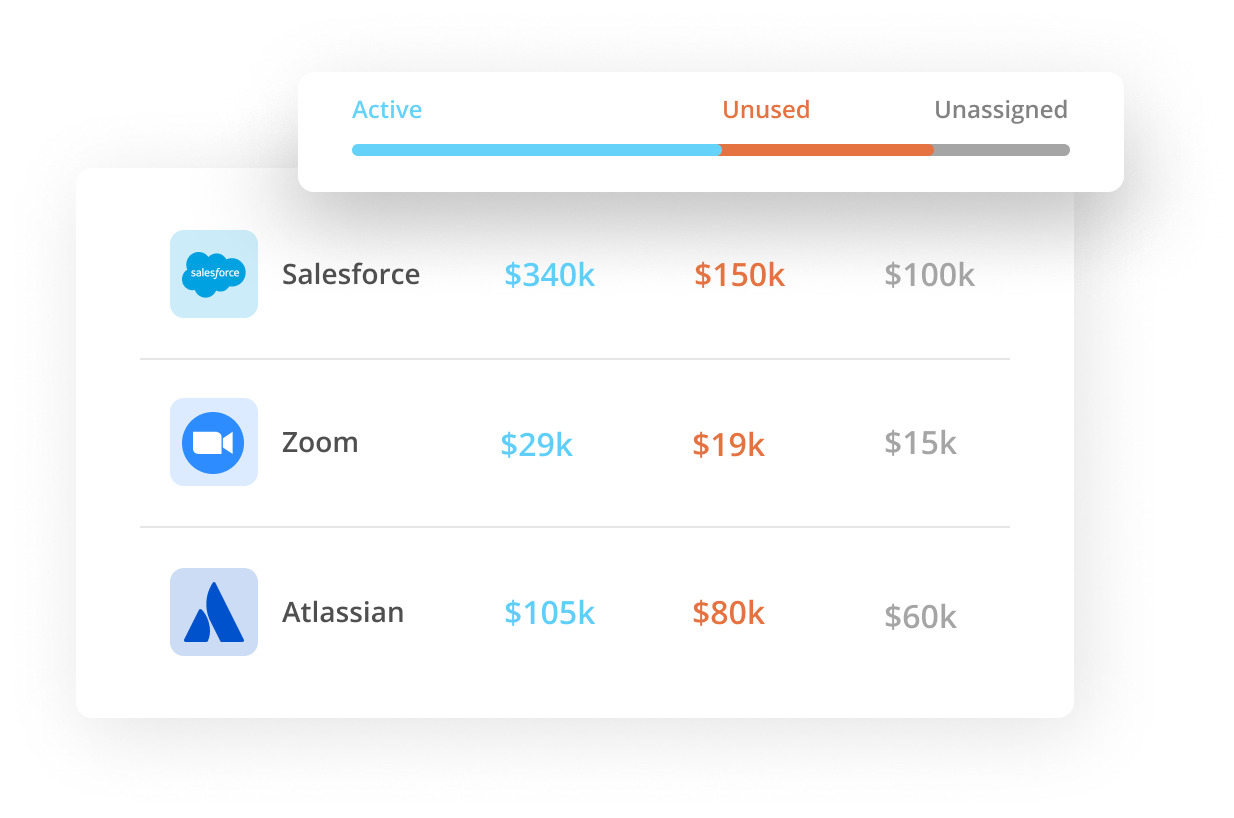Are you overwhelmed by SaaS management? Has your SaaS spend spiraled out of control?
If so, you’re not alone. Ever since the SaaS explosion of the early 2000s, employees have begun rapidly downloading, experimenting with, and ultimately ditching thousands of applications, looking for new ways to problem solve and streamline their workflows.
But wait, isn’t that a good thing?
While no one can deny that the SaaS explosion sparked new waves of ingenuity, it also left organizations largely unprepared to manage their suddenly robust, and ever-changing tech stacks. And, today, with almost every cloud application running on a costly subscription model, the rise of Shadow IT is no longer just threatening your data, but also your budgets.
In a recent report, we discovered that 41% of executives said that challenges with SaaS spend visibility & optimization (as a result of the COVID-19 pandemic) had the largest impact on the way their organization operates. And that statistic makes sense since we know that 20-40% of enterprise tech spend happens outside of IT’s view. 1
This lack of visibility results in surprise SaaS renewals, wasted budgets, and the constant anxiety that the CFO will come knocking at your door, demanding answers.
Fortunately, this is all preventable. But, it first requires us to better understand how we got to this point.
Three Reasons Why SaaS Spend Management Feels Impossible
- SaaS is Decentralized
- No Application Ownership
- Finance, Procurement, and IT Don’t Always Communicate Well
One of the main reasons why Saas Spend Management feels so impossible is because IT can’t see the apps that need to be managed.
But are you to blame? Nope. We have the age-old threat of Shadow IT to thank for this one. Once again, it all goes back to the SaaS explosion and how easily employees can download most software with just a few clicks of a button—without IT ever knowing!
This decentralization of application procurement ultimately results in…
- Knowledge silos—Each department within your organization may be working from different and even incompatible applications. Not only does this increase your number of costly subscriptions, but it also silos your departments’ valuable insights, preventing cross-departmental collaboration.
- Duplicate applications—Not understanding what apps your organization has, their functionality, and usage (or lack thereof), leads to costly yet avoidable oversights. Multiple departments may be paying for a subscription to the same application, all the while wasting unused licenses, and/or a department may be onboarding a costly app that has the same functionality as already-paid-for and widely adopted software.
- Unwarranted security risks—Remember, just because IT isn’t aware of all your applications doesn’t mean they don’t exist. Instead, your organization’s sensitive data is constantly flowing through them. This poses severe and costly security risks, all of which IT has no way of addressing…that is, until it’s too late.
All of these factors of decentralization may be bleeding your organization’s budget dry while restricting its growth.
Failure to assign owners to different applications results in a shared and ultimately failed responsibility.
It’s just like the bystander effect. Individuals are less likely to offer help (and in this case, update important SaaS information), when the responsibility is spanned across several people. Essentially, everyone has the same assumption—someone else will do it—leaving the task incomplete.
Learn more about the importance of assigning an application owner in our blog, 3 Steps to Eliminate Surprise SaaS Renewals.
It’s no surprise that finance, procurement, and IT all play a vital role in the safe onboarding of any application. What might be surprising, though, is how often these departments fail to communicate.
Whatever the case may be, any breakdown of communication between these departments squashes your organization’s hopes of building and maintaining a Single Source of Truth (SSOT) for all of your application information.
Learn more about why building an SSOT is one of the six best practices for SaaS Management here.
Reality Check—SaaS Related Frustration is Normal!
Dreading SaaS management has seemingly become a right of passage for most organizations. But, it doesn’t have to be.
Learn how to gain control of your organization’s SaaS spend and check out the Torii Platform today.
Sources:
1.https://securityboulevard.com/2019/01/shadow-it-running-rampant-in-many-organizations-despite-security-risks/

